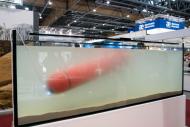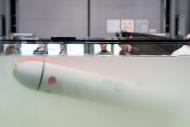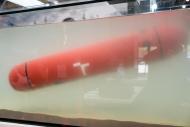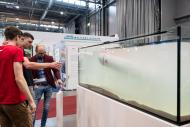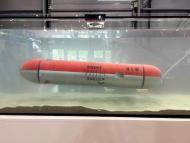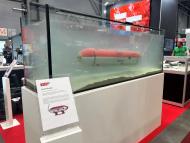Ideas and discoveries
ARGO underwater: Prototype of student submarine on display at IDET Fair
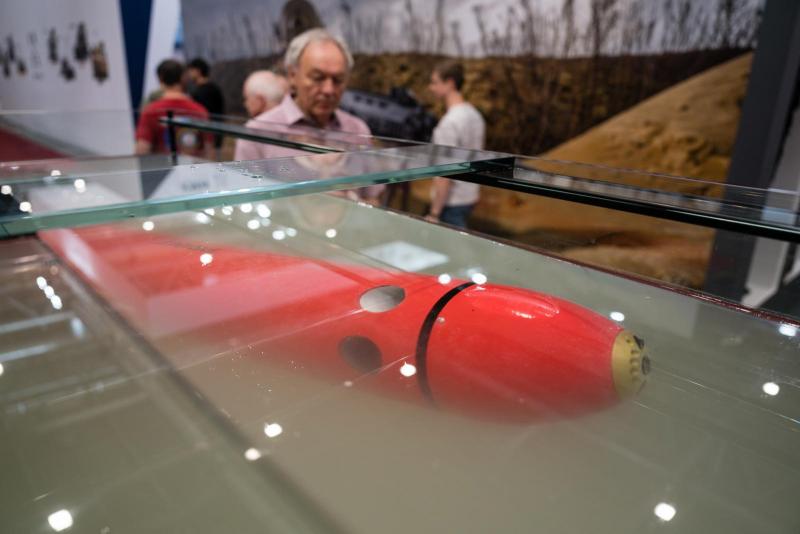
The first generation of the ARGO underwater drone is presented at the IDET (International Defence and Security Technologies Fair) by students of the BUT (Brno University of Technology). The strojLAB team, which brings together students from across faculties and disciplines, is working on the construction of a small submarine with which it wants to explore and hopefully reach the bottom of the Hranice Abyss. After a year of development, the students have completed their first model on which they are testing the intended design elements, special propulsion and control. ARGO will be on display from 24 to 26 May at the BUT stand in Brno, Hall P, Stand No. 110.
“I got the idea for the submarine for the Hranice Abyss last year at the end of the examination period. At the time, I read an article about another attempt to reach the bottom of the abyss and thought we could try to design and build our own submarine. Of course, we don't know if we will succeed or if we will actually reach the bottom of the abyss, but that's not what our team is about. The goal is to learn as much as possible on the project and that everyone will find an area that will interest and entertain them,” says Jan Kalina, head of the strojLAB student team.
The Hranice Abyss
is located in the Hranice Karst in the Olomouc Region. The depth of the dry part of the abyss is 69.5 metres. At the bottom is the Hranice pond, which covers the flooded part of the abyss, the depth of which has not yet been fully measured. In August 2022, a record depth of 450 metres below the surface was reached, but even then the bottom was not reached. The Hranice Abyss is the deepest flooded freshwater cave in the world. According to Kalina, the submarine – or underwater drone, as the students call their ARGO – was sufficiently ambitious project that also offered students across the BUT the opportunity to get involved. Although the team is based at the Faculty of Mechanical Engineering, the team also includes a group of young chemists who are planning to deploy a water analysis module on ARGO, computer science students working on the software, and students from the Faculty of Business taking care of sponsors and marketing. Around twenty-five students are currently working on the design and development of the submarine.
The roughly one metre and twenty centimetres long cylinder does not weigh much yet, on land it weighs between two and five kilograms. For the first phase of testing, ARGO is made largely from plastic by 3D printing. The submarine has cameras and sonar on one end, and a cable on the other end that powers and controls it. And – perhaps surprisingly – it flows into the submarine quite deliberately. “It's designed so that its interior is flooded with water and our drive and the “brains” of the whole device are in the pipes that run through it. It's simpler than dealing with waterproofing,” explains Tomáš Jakuš, a student at the Faculty of Mechanical Engineering, who is in charge of the development team dedicated to simulations.
This drive is quite atypical. The students went for the so-called rim-thruster, an innovative type of electric motor that the layman can recognize at first glance because its blades are not located on the central shaft, but instead on the outer ring. “So far we are trying to get closer to a real rim-thruster, but we didn't choose the engine by chance. A number of previous dives have ended in failure because the submarine's cable got tangled. Thanks to the rim-thruster drive, we should not be threatened by this,” Jakuš adds, noting that the use of this drive for an underwater drone is relatively unusual, the rim-thruster is so far used more in shipping.
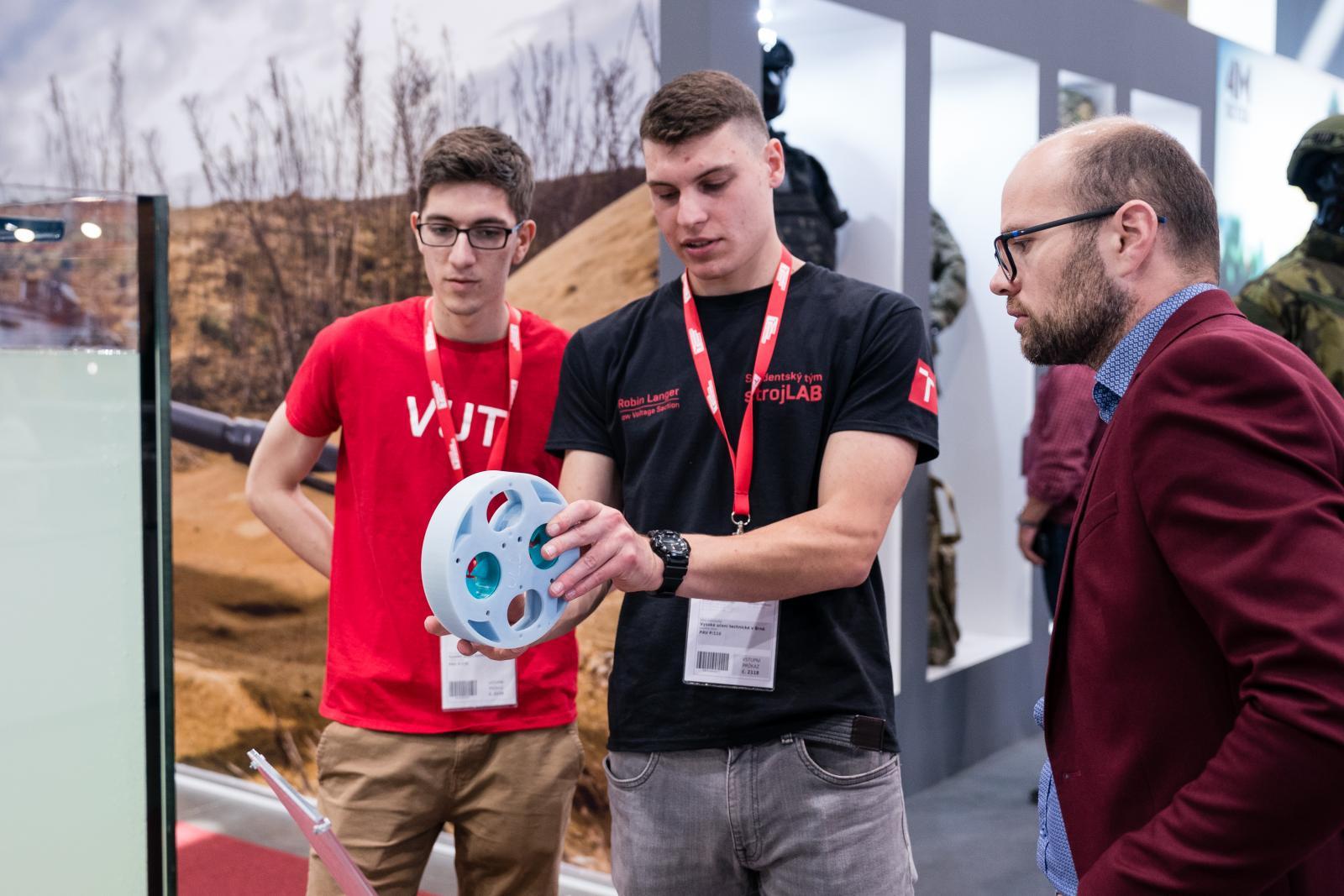
To control the submarine, the team is adapting commonly used software designed to control flying drones. “Our underwater drone is a bit similar, but we still have to modify the software a lot. After all, movement underwater is spatially more complex and also slower than in the air. We are also planning partial elements of autonomous control and we are also preparing our own user interface and driver that the pilot will use,” described Tomáš Svoboda, the coordinator of the strojLAB projects.
The submarine is built as modular. The aim is to make it easy to fit it with the necessary equipment of various types and thus change its purpose. In the meantime, the students plan to work on 3D mapping of the environment, sampling water and sediments, and possibly rocks. The team has already entered the submarine in the BUT Student Entrepreneurship Award competition, which gave them the opportunity to show ARGO at this year's IDET Fair. “The judges in the competition advised us that a number of elements from our submarine could be quite innovative and interesting, for example, for use by the army or the police,” says Vojtěch Parkan from the team's business section.
strojLAB
is an interfaculty team of BUT students in Brno, which aims to work on unique projects that students would not dare to do on their own. It offers students the opportunity to be involved in the development of the device from the very beginning. The team is based in the student workshop strojLAB at the Faculty of Mechanical Engineering, but also uses other laboratories across the BUT. Team websitewww.strojlab.cz
The so-called first phase of development, which concludes the ongoing tests, aims to verify that the students have chosen the right type of design and that the chosen drive is not a dead end. “If all goes well, we would like to have phase two ready by the beginning of next year. It will be a more solid design, many components will not be plastic but metal, systems will be more sophisticated. The ambition of phase two is to sink ARGO into the Brno dam. There, due to the depth, more pressure will be created, the water will be muddy and the movement will be more difficult. It will no longer be about laboratory conditions,” Parkan concludes.
(ivu)
Women from BUT who move the world of science and technology
The first woman at the head of the formula team has a great start
Majáles returns after 2 years, royal candidates from BUT are ready to fight
Doctoral students in engineering study the behaviour of the circulatory system. Neural networks also help them
Challenge as a lifestyle: strojLAB connects students and fields of study across BUT
